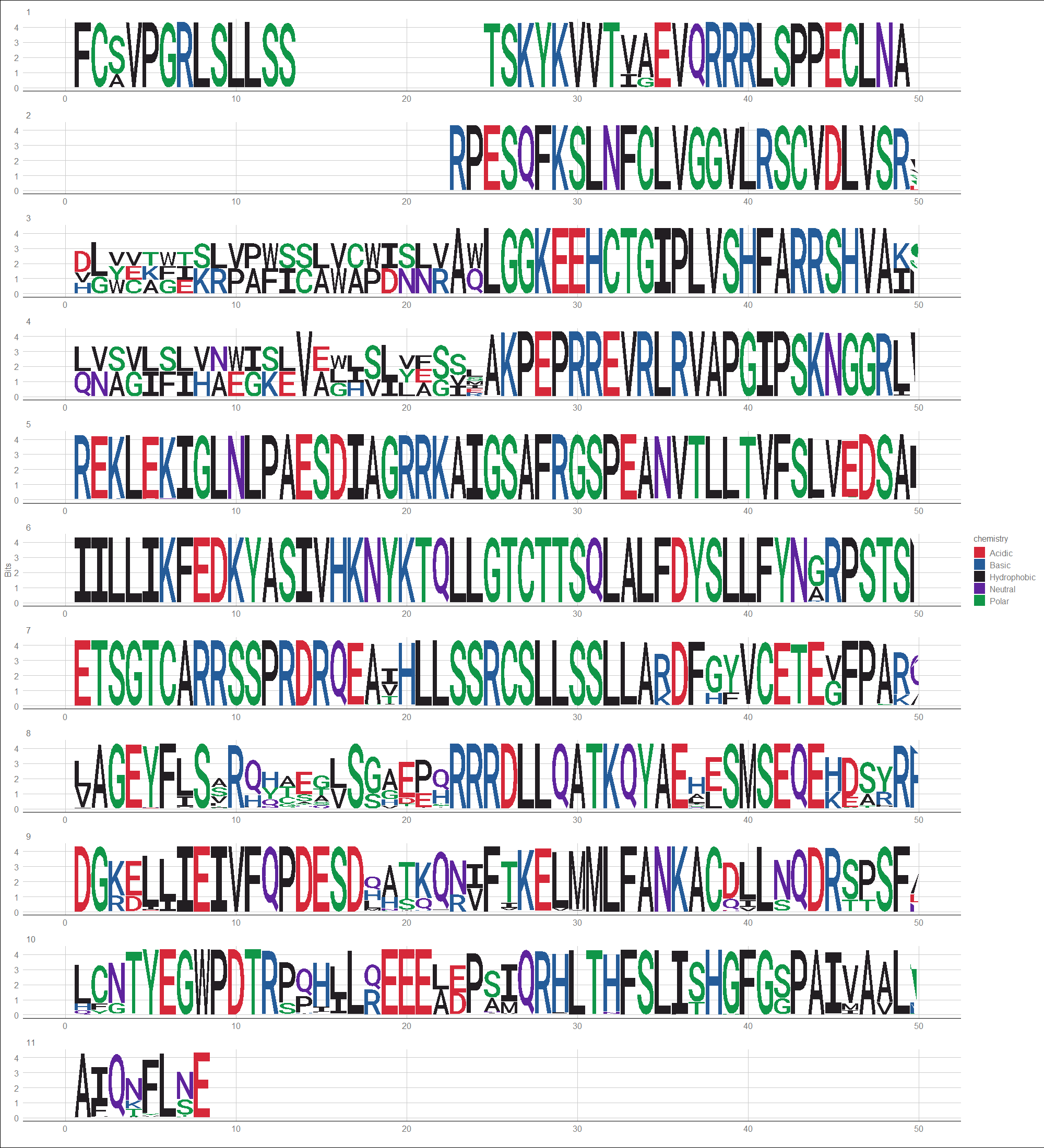AP-2
- Domain
- TF_AP-2 domain
- Group
- Basic Domians group
- PFAM
- PF03299
- Desciption
- Activator protein-2 (AP-2) transcription factors constitute a family of closely related and evolutionarily conserved proteins that bind to the DNA consensus sequence GCCNNNGGC and stimulate target gene transcription [PMID: 2010091, PMID: 1998122]. Four different isoforms of AP-2 have been identified in mammals, termed AP-2 alpha, beta, gamma and delta. Each family member shares a common structure, possessing a proline/glutamine-rich domain in the N-terminal region, which is responsible for transcriptional activation [PMID: 2010091], and a helix-span-helix domain in the C-terminal region, which mediates dimerisation and site-specific DNA binding [PMID: 199812]. http://www.ebi.ac.uk/interpro/entry/IPR013854
- Rederence
-
- Analysis of the DNA-binding and activation properties of the human transcription factor AP-2. Williams T, Tjian R. Genes Dev. 5, 670-82, (1991).
- Characterization of a dimerization motif in AP-2 and its function in heterologous DNA-binding proteins. Williams T, Tjian R. Science 251, 1067-71, (1991).
- Regulatory roles of AP-2 transcription factors in vertebrate development, apoptosis and cell-cycle control. Hilger-Eversheim K, Moser M, Schorle H, Buettner R. Gene 260, 1-12, (2000).
- Loss of AP-2 results in up-regulation of MCAM/MUC18 and an increase in tumor growth and metastasis of human melanoma cells. Jean D, Gershenwald JE, Huang S, Luca M, Hudson MJ, Tainsky MA, Bar-Eli M. J. Biol. Chem. 273, 16501-8, (1998).
- Expression of transcription factor AP-2alpha predicts survival in epithelial ovarian cancer. Anttila MA, Kellokoski JK, Moisio KI, Mitchell PJ, Saarikoski S, Syrjanen K, Kosma VM. Br. J. Cancer 82, 1974-83, (2000).
- The AP-2 Transcription Factor APTF-2 Is Required for Neuroblast and Epidermal Morphogenesis in Caenorhabditis elegans Embryogenesis. Budirahardja Y, Tan PY, Doan T, Weisdepp P, Zaidel-Bar R. PLoS Genet 12, e1006048, (2016).
- Cardiac malformations, adrenal agenesis, neural crest defects and exencephaly in mice lacking Cited2, a new Tfap2 co-activator. Bamforth SD, Braganca J, Eloranta JJ, Murdoch JN, Marques FI, Kranc KR, Farza H, Henderson DJ, Hurst HC, Bhattacharya S. Nat Genet 29, 469-74, (2001).
